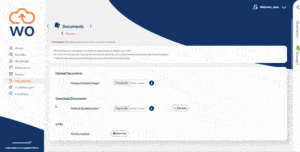What’s the experience like for new hires who are joining your organisation and why does this really matter?
These are questions that need to be considered due to the crucial role that onboarding plays in the hiring and HR process. Employee onboarding begins the moment a successful candidate (an onboardee) has a role offered and it covers all of the key tasks and documents required to integrate them into the organisation.
Onboarding includes everything from contracts and offer letters to first-day preparations and compliance policies. For more than a third of organisations (68 percent), these tasks are still being handled manually, with a mix of phone calls, posted paperwork, emails and spreadsheets.
It creates a slow and inefficient system which is liable to result in the worst possible first impressions for a new starter. After the elation of being offered the role, they find themselves entering into a long, stressful and confusing onboarding stage.
They receive sparse information, paperwork takes an interminable time to complete and when they finally do start, they’re greeted with ill-prepared offices. A 2017 survey by webonboarding found that 42 percent of new starters don’t have a working computer on arrival – 26 percent didn’t even get a desk.
Why does onboarding matter?
These kinds of inefficiencies matter. The survey found that 15 percent of respondents had pulled out of jobs because of lengthy and frustrating experiences during onboarding. These kind of dropouts multiply the HR time and costs that are wasted.
There are also the long-term costs of a misfiring onboarding operation. This is a result of unhappy and demotivated employees entering the workplace. It can lead to lower productivity, increased staff ‘churnover’ and a toxic working environment.
So there are very real business reasons to want to improve onboarding – to create an operation that delivers a hassle-free and welcoming experience for new hires. It’s one of the reasons why organisations have started to fundamentally rethink the way they handle onboarding.
Webonboarding provides a means so that HR and hiring teams are no longer stifled by the inefficiencies of manual processes. An online portal allows all of the communications to be handled in real-time with digital signing removing the need for documents to be posted.
By removing so much of the administrative burden, automated systems allow HR to start focusing more on crafting an engaging and positive onboarding experience which creates the foundations for a happy and productive employee.
Some simple strategies to improve the onboarding experience include:
Start onboarding early
With the traditional approach to onboarding, there’s a tendency to leave many of the tasks until the new hire arrives in the workplace. This means they’re bombarded all at once with important information, policy guides and admin tasks.
A cloud-based management system allows the sharing of information to start the moment a successful job applicant has been chosen. All of the information required can be made instantly accessible via the online portal.
It allows for a smooth and efficient workflow to be created which means onboardees don’t have to face a deluge of information and instructions on their arrival.
Tell your story
Handling information online allows any kind of digital information to be shared. It provides a host of ways to improve engagement with new hires and to provide them with the ‘story’ of your organisation.
Many companies now have welcome videos and digital packages that provide a more personal introduction to an organisation. It’s a way to effectively communicate the ‘brand’ of the business and to share the ethos and aims of the organisation.
Think social
One of the factors that makes starting a new job so stressful is all the connected challenges of moving into a completely new environment. For some onboardees, this will include having to handle relocating to a new town or city.
So an effective onboarding strategy is to provide help and guidance with matters outside of the workplace. This could be links to social and sporting clubs or guides providing helpful info on local services, groups and activities.
Get feedback
You can’t improve the onboarding experience unless you have feedback. That’s something that’s prohibitively time consuming to manage when you’re using a traditional approach. Webonboarding is a system which allows feedback to be automatically integrated into the workflow.
Onboardees are able to rate their experience with a star rating and provide any comments on the positive and negative aspects of the process. It gives HR the ability to start properly monitoring performance and honing the experience of an onboarding operation.
A fresh approach to onboarding
With access to improved ways to handle the onboarding process, there’s no longer any excuse for organisations to be offering such frustrating and negative experiences for new hires.
While starting a new role is always a challenge, so much of what makes it a negative experience can be avoided with improved efficiency and a better understanding of the role of onboarding in creating a productive working environment.




